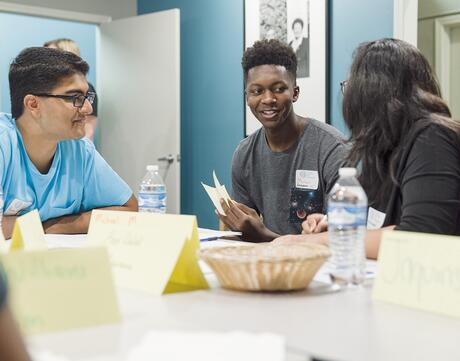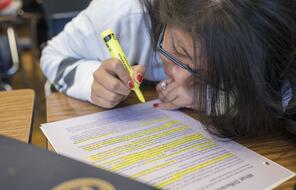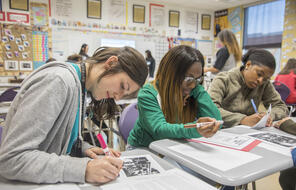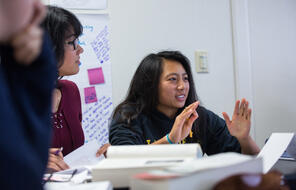
Belonging on Your Own Terms
At a Glance
Language
English — USSubject
- English & Language Arts
Grade
7–8Duration
Two 50-min class periods- Culture & Identity
Overview
About This Lesson
In this final lesson of the text set, students read and discuss a collection of narrative essays in which the authors share stories of moving from fitting in to belonging as young adults. The narratives explore a range of barriers that prevent the authors from fully belonging—race, gender identity, language, and culture—and the ways in which their identities have been shaped by their beliefs about themselves, others’ perceptions of them, and messages they receive from society at large.
Taken together, these personal stories, along with the other texts in this text set, help students recognize that the process of navigating the relationship between who we are and where we belong is a complex, ongoing process that we are always negotiating. While the factors that shape belonging can be both internal and external, there are steps we can take to increase our own sense of belonging and foster inclusive and accepting spaces for others in our communities.
Preparing to Teach
A Note to Teachers
Before teaching this lesson, please review the following information to help guide your preparation process.
Lesson Plans
Day 1 Activities
Day 2 Activities
Materials and Downloads
Quick Downloads
Download the Files
Get Files Via Google
Belonging on Your Own Terms
Negotiating Belonging in Trevor Noah’s <em>Born a Crime</em>
From Fitting In to Belonging Assessment Ideas
Additional Resources
Unlimited Access to Learning. More Added Every Month.
Facing History & Ourselves is designed for educators who want to help students explore identity, think critically, grow emotionally, act ethically, and participate in civic life. It’s hard work, so we’ve developed some go-to professional learning opportunities to help you along the way.
Exploring ELA Text Selection with Julia Torres
On-Demand

Working for Justice, Equity and Civic Agency in Our Schools: A Conversation with Clint Smith
On-Demand

Centering Student Voices to Build Community and Agency
On-Demand

















